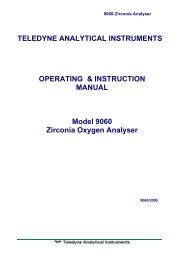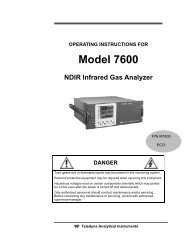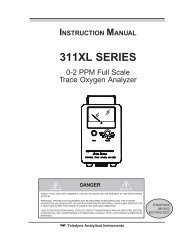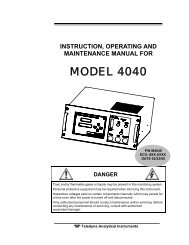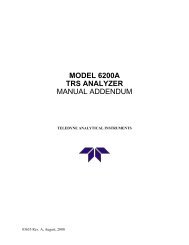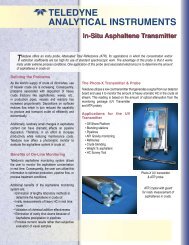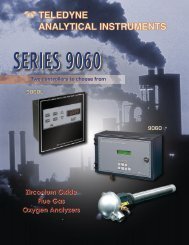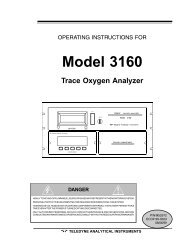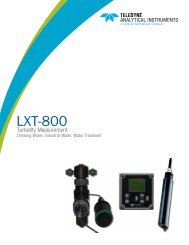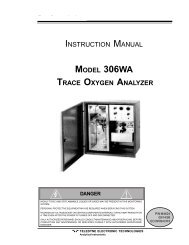Nickel-Cadmium batteries
Nickel-Cadmium batteries
Nickel-Cadmium batteries
Create successful ePaper yourself
Turn your PDF publications into a flip-book with our unique Google optimized e-Paper software.
Page 4 of 6Other Effects of Repeated (Chronic) Exposure: Repeated overexposures to cadmium may result in lung cancer; lung, kidney, and liver dysfunction; skeletal disease(e.g., osteoporosis) and reproductive toxicity. Chronic overexposure to nickel may result in cancer; dermal contactmay result in dermatitis in sensitive individuals.Medical Conditions Aggravated by Overexposure: A knowledge of the available toxicology information and of the physical and chemical properties of the materialsuggests that overexposure in unlikely to aggravate existing medical conditions.Emergency and First Aid Procedures:Swallowing: Do not induce vomiting. Seek medical attention immediately.Skin: If the internal cell materials of an opened battery cell comes into contact with the skin, immediately flush with waterfor at least 15 minutes.Inhalation: If potential for exposure to cadmium or nickel fumes or dusts occurs, remove immediately to fresh air and seekmedical attention.Eyes: If the contents from an opened battery comes into contact with the eyes, immediately flush eyes with watercontinuously for at least 15 minutes. Seek medical attention.Section VI - Health Hazard DataThe <strong>batteries</strong> are stable under normal operating conditions.Hazardous polymerization will not occur.Hazardous decomposition products: oxides of cadmium and nickel.Conditions to avoid: heat, open flames, sparks, and moisture.Potential incompatibilities (i.e., materials to avoid contact with): The battery cells are encased in a non-reactive container;however, if the container is breached, avoid contact of internal battery components with acids, aldehydes, and carbamatecompounds.Section VII - Health Hazard DataSpill and leaks are unlikely because cells are contained in an hermetically-sealed case. If the battery case is breached, donprotective clothing that is impervious to caustic materials and absorb or pack spill residues in inert material. Dispose of as ahazardous waste in accordance with applicable state and federal regulations. Resultant spill residues may be characterizedas D002 (caustic) and D006 (cadmium) pursuant to the federal Resource Conservation and Recovery Act (RCRA). SeeSection IV for response to fires or explosions.The information and recommendations set forth are made in good faith and believed to be accurate as of the date ofpreparation. SANYO ENERGY CORP. makes no warranty, expressed or implied, with respect to this information anddisclaims all liabilities from reliance on it.





